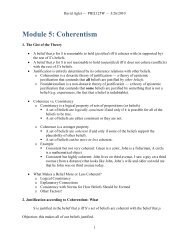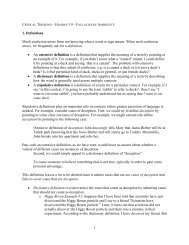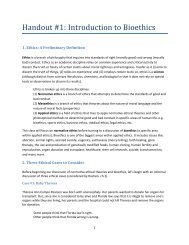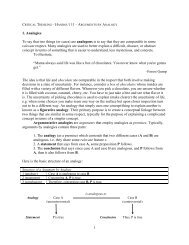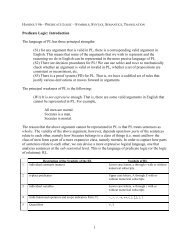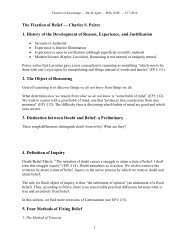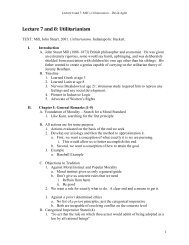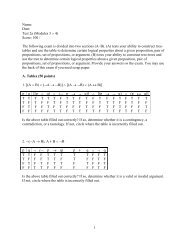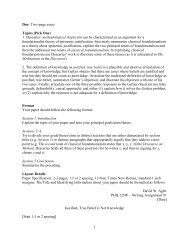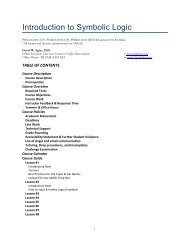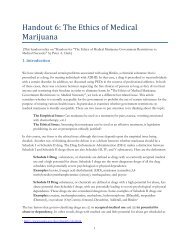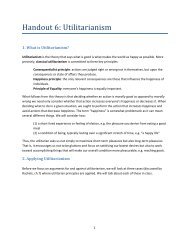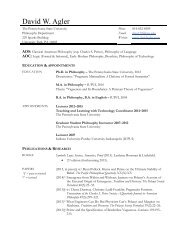Chapter 9 Modal Language, Syntax, and Semantics - David W. Agler
Chapter 9 Modal Language, Syntax, and Semantics - David W. Agler
Chapter 9 Modal Language, Syntax, and Semantics - David W. Agler
- No tags were found...
You also want an ePaper? Increase the reach of your titles
YUMPU automatically turns print PDFs into web optimized ePapers that Google loves.
There are four quantifier rules4 ¬P, 0 3 ¬∨D5 ¬Q, 0 3 ¬∨D10.2. Negated Box <strong>and</strong> Diamond DecompositionThe first two modal tree decomposition rules concern propositions where a negation operatesupon a modal operator.Negated Diamond Decomposition (¬◊D)¬◊P, i □¬P, iNegated Box Decomposition (¬□D)¬□P, i ◊¬P, iNegated diamond decomposition <strong>and</strong> negated box decomposition.1 ¬◊(P∧R), 0 P2 ¬□(P→R), 1 P3 □¬(P∧R), 0 1¬◊D4 ◊¬(P→R), 1 2¬□D10.3. Box <strong>and</strong> Diamond DecompositionThe second two modal tree decomposition rules concern propositions where the main operator isa modal operator.Diamond Decomposition (◊D)◊P, I iR jP, jwhere j is a world that does not previouslyoccur in the branchBox Decomposition (□D)□P, iiR j~P, jwhere w i Rw j occurs somewhere in the branchIn the case of diamond decompositionIn the case of box decomposition18



